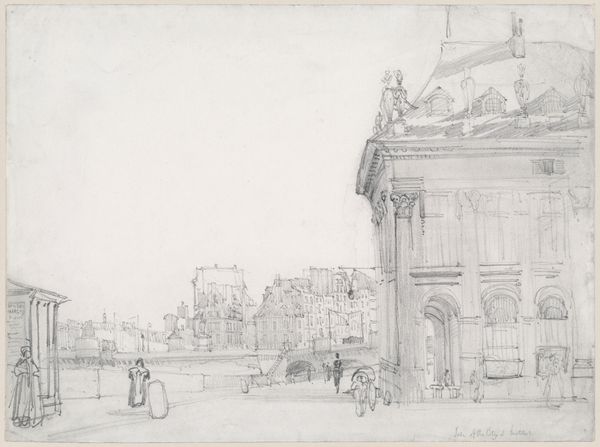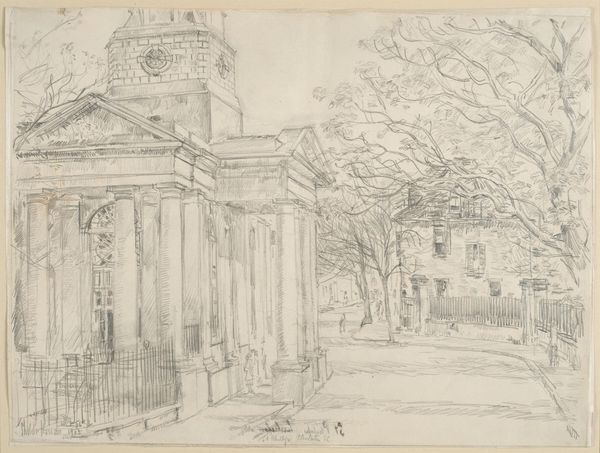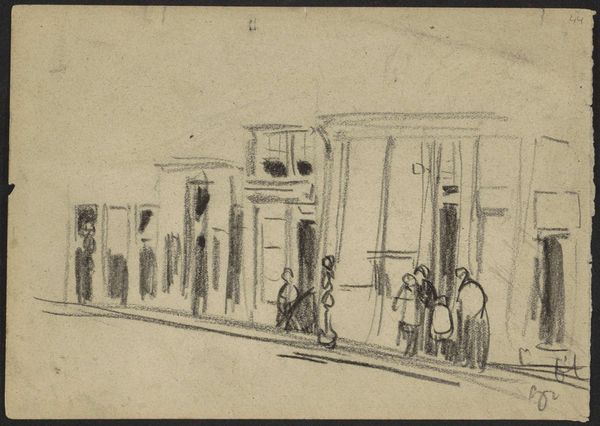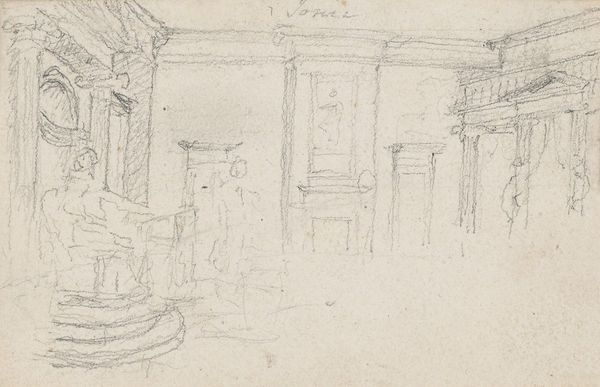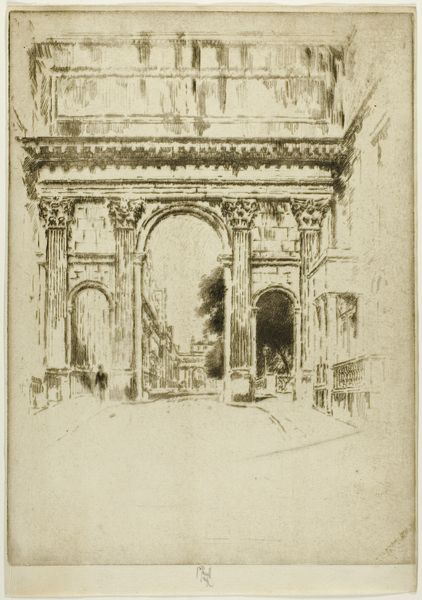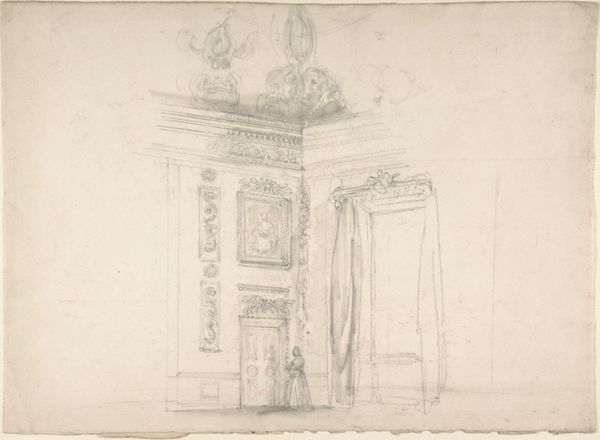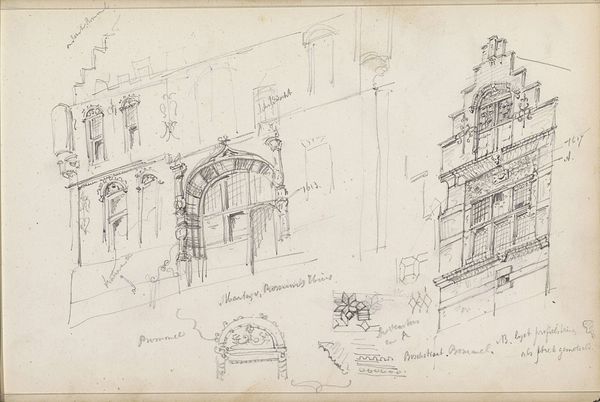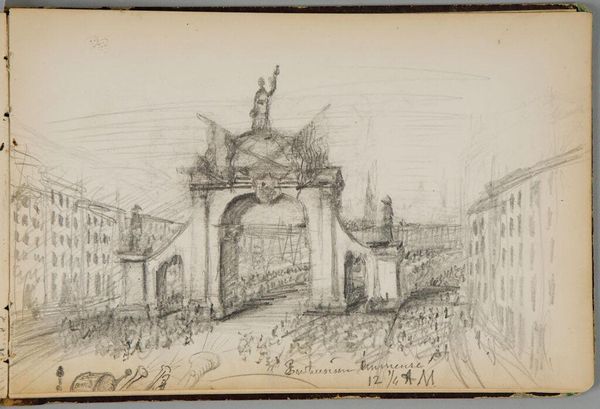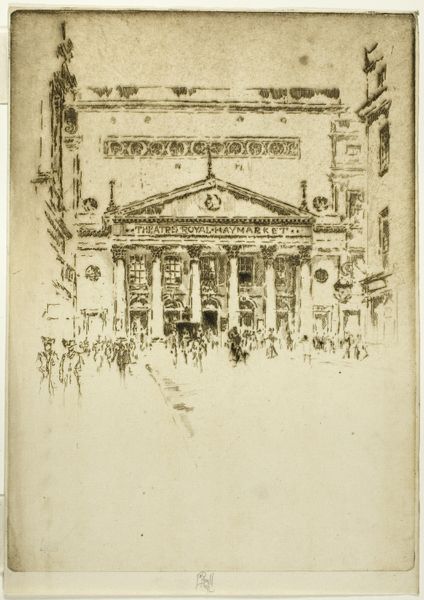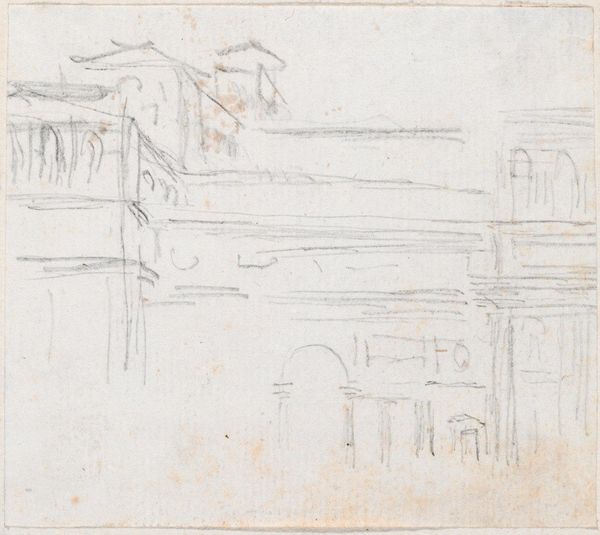
Study for a Triumphal Arch (recto); Alternate Study for a Triumphal Arch (verso) 1795 - 1805
0:00
0:00
drawing, print, pencil
#
drawing
#
neoclacissism
# print
#
pencil sketch
#
landscape
#
classical-realism
#
etching
#
perspective
#
form
#
pen-ink sketch
#
pencil
#
arch
#
line
#
cityscape
#
history-painting
#
academic-art
Dimensions: 7 7/8 x 8 15/16 in. (20.0 x 22.7 cm)
Copyright: Public Domain
This is Hubert Robert’s “Study for a Triumphal Arch,” a graphite sketch now residing at the Metropolitan Museum. The arch, a potent symbol, immediately evokes the grandeur of ancient Rome, a gateway for victorious armies. Consider the arch itself. It’s an architectural embodiment of triumph and power, seen in Rome with the Arch of Titus. Notice how the image of the archway transcends its immediate use. In Robert’s drawing, the arch is adorned with classical sculptures and reliefs, a symbolic language of power and victory. Now, reflect on the cyclical nature of history. The triumphal arch, initially Roman, reappears throughout the ages, morphing to celebrate various rulers. In the collective memory, the arch is more than stone; it’s a psychological signifier, a deeply ingrained symbol of authority that engages with our subconscious understanding of power. The archway continues to evolve and resurface, each time carrying echoes of its past triumphs.
Comments
No comments
Be the first to comment and join the conversation on the ultimate creative platform.
